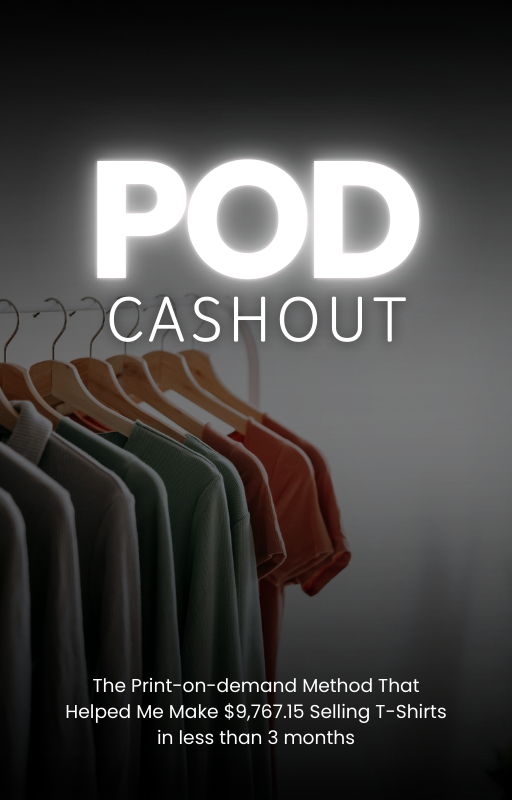You’ve probably heard someone say they’re “making money in their sleep” and rolled your eyes. But with digital products—like printables—it’s actually a thing. Once they’re made and listed, they can keep selling over and over, no shipping, no restocking, no customer chasing. If that sounds like something you’d love, Etsy’s a great place to start. Let’s talk about how to actually build a shop that works, even if you’re starting from zero.
First off—why Etsy? Because it’s basically the go-to spot for anything custom, artsy, or creative. People go there expecting to pay for stuff like planners, invitations, signs, journals, budgeting templates—you name it. And since we’re talking digital files here, you don’t need to deal with inventory, storage, or even your local post office. That cuts the stress and startup costs way down.
Plus, if you do it right, this isn’t just side hustle money. Some sellers are pulling in thousands a month. If that’s got your attention, you’ll probably want to check out how one guy turned a photo printer into $100K—same kind of digital-meets-passive-income vibe.
Pick a Niche That Doesn’t Suck the Life Out of You
One of the fastest ways to stall is to go way too broad. Trying to sell everything to everyone just turns your shop into a mess. Instead, zoom in on something specific that you actually like creating. Maybe it’s digital planners, maybe it’s wedding signs, maybe it’s funny wall art for bathrooms. Weird sells.
Take a peek at what’s already trending on Etsy. Tools like eRank and Marmalead can help you see what people are buying. But don’t just copy—make it your own. There’s always room for something with personality or a fresh twist. The sweet spot? A niche that people are already searching for, but where you can bring something better or different.
And don’t sleep on themes. “Editable wedding invitation” is cool, but “Boho desert wedding invite set for elopements” is gonna hit way harder with the right couple. Specific sells.
Keywords Are the Difference Between Sales and Crickets
You could make the cutest printable on the planet, but if nobody can find it, it might as well not exist. Etsy is basically a search engine, so keywords are everything.
You gotta think like a buyer. If you were shopping for your product, what would you type in? Then go deeper. Instead of just “budget planner,” try something like “printable weekly budget tracker for couples.” That kind of long, specific phrase is more likely to bring in people who are ready to click “buy.”
Tools like EtsyRank and even Google’s keyword planner can help. And yes, it takes a little time, but once you start showing up in the search results, those listings can pay you over and over.
If you want more help staying on top of things like that, we broke it down in this checklist article that keeps your hustle running smoothly. Total lifesaver when you’re juggling a million little details.
Your Designs Don’t Need to Be Fancy—But They DO Need to Work
You don’t need to be a graphic design pro to get started, but your stuff has to be clean, functional, and easy to use. Canva is awesome for beginners, but if you’re down to learn tools like Illustrator or Photoshop, even better.
Use good fonts, clean layouts, and make sure it’s actually editable or printable in a way that doesn’t make your customer want to scream. And test everything. Print it yourself or have a friend try it out before you list it.
If you’ve never messed with digital design before, don’t panic. You can totally learn as you go. Just don’t rush it. Your product should look like it’s worth the price, even if it’s $3.95.
Listings Matter. A Lot.
Once you’ve made something great, your job isn’t done. You need your Etsy listing to do some heavy lifting. That means writing a title that uses your keywords (but still makes sense), uploading clear, pretty images (mockups help big time), and writing a description that covers the basics without boring people to death.
Tell them what it is, how to use it, what they’re actually downloading, and how to get in touch if they need help. Basically, answer every question they might have before they ask it.
Price it based on what others in your niche are charging, but don’t lowball yourself just to compete. If you’ve got something good, people will pay for it.
Branding Isn’t Just for Big Companies
Your Etsy shop is a tiny brand, whether you mean for it to be or not. If you’re consistent with your vibe—colors, fonts, tone, product types—people will start to recognize you. And trust you.
Create a shop banner, write a short bio, get a logo (you can make one in Canva to start). It doesn’t need to be super polished at first, but it does need to feel intentional.
People love supporting small creators, especially when your shop feels like a real person made it—not just a digital vending machine.
Now Spread the Word
Etsy brings you some traffic, but if you want to grow faster, you need to market. Instagram and Pinterest are goldmines for visual stuff like printables. TikTok too, if you’re comfortable on video.
Show behind-the-scenes content. Show how to use your printables. Make short tutorials. Offer a freebie in exchange for emails and start a list. These things don’t blow up overnight, but they build momentum.
You can also team up with influencers or bloggers who already reach your target audience. Maybe send them a free pack of your printables and ask them to share it. Low effort, high impact if you do it right.
And if you ever need inspo, check out how this side hustle turned baking into real income—total proof that niche + passion = cash.
Reviews = Trust
People trust people. If someone lands on your shop and sees “5 stars, 700 sales,” they’re way more likely to buy. But that only happens if you make people happy.
Be quick with replies. Fix issues fast. Throw in a bonus file or a thank-you note. Those small things get big results.
Ask happy buyers to leave reviews. A simple line in your message like “If you loved your printable, a quick review helps so much!” can double your feedback rate.
Ready to Grow?
Once your shop’s making some sales, keep it moving. Add matching items. If one invitation set is doing great, make a save-the-date, RSVP card, or wedding program that goes with it. Create bundles. Test out a different style.
Use automation tools when things start to pick up—like email responses or order tracking. If you’re slammed, hire help for customer service or listing updates. You don’t have to do it all alone.
The goal is to work smarter, not harder. Stack up products that keep selling without you hovering over them 24/7.
If you stick with it, this can absolutely grow into something real. You don’t need to go viral. You don’t need 10,000 followers. You just need consistent effort and solid products.
Start with one thing. Then another. Then another.
And when you look up one day and realize this little idea is paying your bills? That’s when it hits. You built this.







